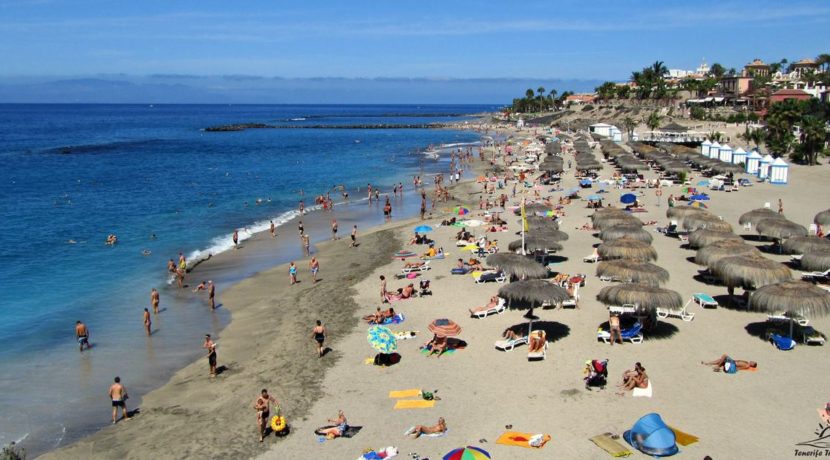The latest data 2019 on lodged tourists published by Turismo de Tenerife reflect a growth of 14.1% over the 2018 year. 21.7% more British tourists.
One of the keys to Adeje’s tourism growth in 2019 is the increase in its main market, that of the United Kingdom, which already accounts for 45.4% of the total quota. In the first five months of this year, the town of Adejera received 21.7% more British tourists than the previous year, which is 69,058 more. The rest of the issuing markets are very far from the United Kingdom regarding their importance in Adeje. The second that brings more tourists is the German, but it represents only 10.7% of the total. The third is Spanish, with a 9.9% share, although its increase has been spectacular: 42.4% more (+25.078), only surpassed by 56.7% of the United States market, which contributed 3,533 visitors (0.4% of the total).
Adeje leads tourism growth in the South of Tenerife with a 14.1% increase in the number of visitors accumulated until last May. The latest data published by Turismo de Tenerife, with statistics from the insular area of Economic Development, reflect that in the first five months of 2019 Adeje has received 105,459 tourists more than in the same period of 2018. An increase that is almost four points above from the South average (+ 10.4%) and more than 11 points above the neighboring municipality of Arona (+ 2.8%).
Until May 2018, Adeje had received a total of 748,189 tourists, while in the first five months of this year, the number of lodged rises to 853,648, 214,769 more than Arona.
Virtually all tourist data of Adeje have improved in that period. Overnight stays have increased 5.5%, 4.2% in hotels and 9.1% in apartments. The total figure is 6,076,682 overnight stays, 318,532 more than in this period of the year 2018.
Total employment goes from 67.4% to 69.1%, a 2.5% year-on-year variation. In the case of hotels, the average occupancy reaches 77.8%, compared to 75.8% in May 2018. In the apartments it is 54%, two points more than a year ago.
This improvement in occupancy occurs despite the fact that Adeje currently has 1,665 lodging places more than a year ago, an increase of 2.9% that is distributed between 1.5% growth in the hotel sector and 5, 5% of the extrahotelero.
There are 562 new hotel beds estimated in Adeje, and 1,103 more apartments than a year ago. In total, the housing supply adejera is 58,236 seats, about 10,000 more than in Arona, where there is an estimate of 48,118.
The only data that worsens slightly is that of the average stay, which is reduced only by 0.58 days, since it goes from an average of 7.7 days to 7.12. In this case, the decrease also affects hotels and apartments, whose clients slightly reduce their time of stay: from 7.43 to 6.91 days in hotels, and from 8.5 to 7.68 days in the sector extrahotelero.
In the total of the South of the Island, that includes Adeje, Arona and other tourist zones of this slope of the Island, the first five months of the year have allowed to receive 178,461 tourists more than in the same period of 2018. A growth of the 10.4% which is concentrated in the apartments (+ 14%) and somewhat less in the hotels (+ 8.4%).
Overnight stays in the entire South of the Island of Tenerife have increased by 4.9%, so they exceed 13,861,182. Again, they rise more in the segment of the apartments: + 8.5%.
The average stay in the South is also slightly reduced, as it goes from 7.69 to 7.31 days (-0.38). A balanced descent in the case of hotels and apartments, whose stays fall between 0.39 and 0.40 days.
Total occupancy in the South zone is down 1.1%, double in hotels (-1%) than in apartments (-0.5%). The regional average is 66.5% compared to 67.3% a year ago. Hotels fall from 75.2% to 74.5%, and apartments from 57.6 to 57.3%.
The number of tourist accommodation places in the South increased in this period by 6.1%, which represents 7,916 more places, 2,607 hotel rooms (+ 3.6%) and 5,309 extra-hotel (+ 9.1%). Throughout the South it is estimated that there are currently 137,974 hotel and extra-hotel beds in operation.



